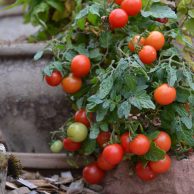
Vilma Tomato courtesy Sara’s Kitchen Garden
A Special Tomato Offer! 2 half-price plants in return for your evaluations!
We know that many of our customers need to grow small but bountiful vegetables in containers.
So we searched out and grew a group of very special, rare varieties of tomato that are specifically intended for growing in containers – Dwarf, Micro dwarf and even hanging tomatoes! They are ready this week, but quantities are limited – only 25 to 60 plants of each variety.[Read More]

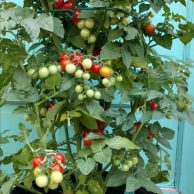 An article in the Guardian caught our eye with the alarming headline ‘Vegetables are Losing Their Nutrients’. It begins with the findings in a 2004 University of Texas study showing dramatic declines in the nutrient content of 43 foods, mostly vegetables, between the mid and late 20th century: green beans have seen a nearly 50% drop in calcium, while asparagus has lost almost half its Vitamin A content.
An article in the Guardian caught our eye with the alarming headline ‘Vegetables are Losing Their Nutrients’. It begins with the findings in a 2004 University of Texas study showing dramatic declines in the nutrient content of 43 foods, mostly vegetables, between the mid and late 20th century: green beans have seen a nearly 50% drop in calcium, while asparagus has lost almost half its Vitamin A content.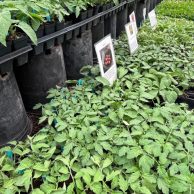 The Peppers are Coming!
The Peppers are Coming! 
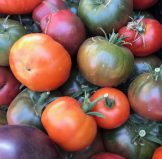 HARLEQUIN’S GARDENS 2024 TOMATO STARTS
HARLEQUIN’S GARDENS 2024 TOMATO STARTS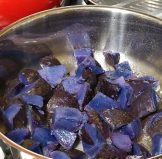
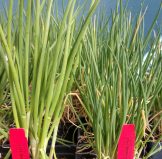
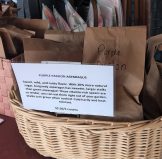
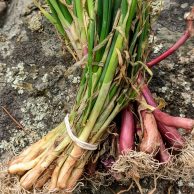
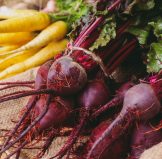 from Mitten Lowe at
from Mitten Lowe at 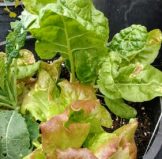
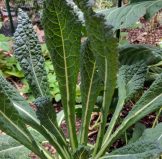
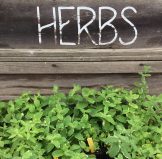 HERBS, Culinary & Medicinal – Many varieties of THYME, LAVENDER, BASIL, MINT, ROSEMARY, SAGE, OREGANO, CHIVES, plus Parsley, French Tarragon, Cilantro, Dill, Fennel, Lemon Balm, Lemon Thyme, Lime Balm, Marjoram,, Lemon Grass, Vietnamese Coriander, Pineapple Sage, Lemon Verbena, Borage, Savory, Lovage, Cutting Celery, Catnip, Calendula, Aloe, Greek Mountain Tea, Comfrey, Echinacea , Feverfew, Lobelia, Valerian, Motherwort, Mullein, Sweet Leaf, Lomatium, Hyssop, Anise Hyssop, Plantain, Clary Sage, Skullcap, Arnica, Sheep Sorrel, Self-Heal, Rue, Mugwort, Wormwood, and more.
HERBS, Culinary & Medicinal – Many varieties of THYME, LAVENDER, BASIL, MINT, ROSEMARY, SAGE, OREGANO, CHIVES, plus Parsley, French Tarragon, Cilantro, Dill, Fennel, Lemon Balm, Lemon Thyme, Lime Balm, Marjoram,, Lemon Grass, Vietnamese Coriander, Pineapple Sage, Lemon Verbena, Borage, Savory, Lovage, Cutting Celery, Catnip, Calendula, Aloe, Greek Mountain Tea, Comfrey, Echinacea , Feverfew, Lobelia, Valerian, Motherwort, Mullein, Sweet Leaf, Lomatium, Hyssop, Anise Hyssop, Plantain, Clary Sage, Skullcap, Arnica, Sheep Sorrel, Self-Heal, Rue, Mugwort, Wormwood, and more.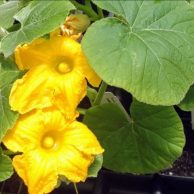 What’s a cucurbit? It’s any plant that’s in the Cucurbitaceae plant family. You eat them frequently and very likely grow them. This is the plant family that includes zucchini, summer and winter squash, pumpkin, cucumber, watermelon, cantaloupe and other sweet melons, and gourd.
What’s a cucurbit? It’s any plant that’s in the Cucurbitaceae plant family. You eat them frequently and very likely grow them. This is the plant family that includes zucchini, summer and winter squash, pumpkin, cucumber, watermelon, cantaloupe and other sweet melons, and gourd. 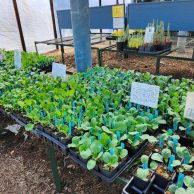
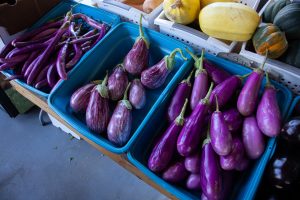 FEATURD EGGPLANT OFFERINGS FOR 2024
FEATURD EGGPLANT OFFERINGS FOR 2024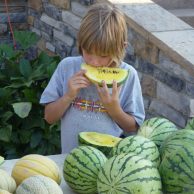
 A Few New & ‘New Again’ TOMATOES:
A Few New & ‘New Again’ TOMATOES: 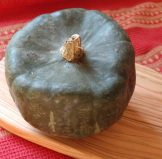
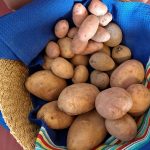
 ONIONS – In Store Now!
ONIONS – In Store Now!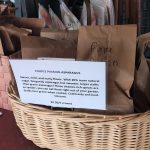
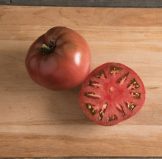 This taste-test winning, hard-to-find heirloom is one of the darkest ‘black’ tomatoes, with delicious, rich, smoky-sweet, complex flavor; pretty 8-14oz. purple-brown fruits are resistant to radial cracking. Big, 5-7’ productive, regular-leaf plants are healthy and tolerate heat and dry conditions.
This taste-test winning, hard-to-find heirloom is one of the darkest ‘black’ tomatoes, with delicious, rich, smoky-sweet, complex flavor; pretty 8-14oz. purple-brown fruits are resistant to radial cracking. Big, 5-7’ productive, regular-leaf plants are healthy and tolerate heat and dry conditions.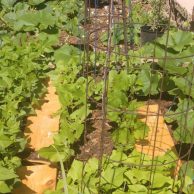 Okay, you prepared your soil and planted your vegetable garden with all kinds of wonderfully flavorful, nutritious foods, you’re watering and watching them grow, and wondering ….. When can I start to eat them, how do I harvest them, and how do I get the most out of these plantings? Here are some tips on vegetable crops harvest timing and techniques that may not be self-evident. Even if you’re a seasoned gardener, you may not be aware of some of these procedures!
Okay, you prepared your soil and planted your vegetable garden with all kinds of wonderfully flavorful, nutritious foods, you’re watering and watching them grow, and wondering ….. When can I start to eat them, how do I harvest them, and how do I get the most out of these plantings? Here are some tips on vegetable crops harvest timing and techniques that may not be self-evident. Even if you’re a seasoned gardener, you may not be aware of some of these procedures! 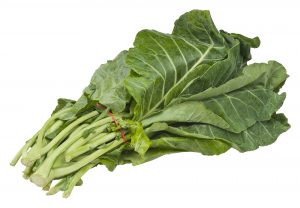
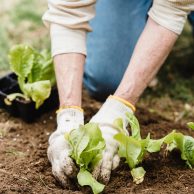 We are here for you! You’re in the high desert/steppe now, with short growing seasons, sudden temperature changes, unpredictable precipitation, low humidity, drying winds, alkaline soils that are low in organic matter and nitrogen, hot summers and cold winters. Despite these challenges, gardens can thrive here, and be productive, rewarding and beautiful!
We are here for you! You’re in the high desert/steppe now, with short growing seasons, sudden temperature changes, unpredictable precipitation, low humidity, drying winds, alkaline soils that are low in organic matter and nitrogen, hot summers and cold winters. Despite these challenges, gardens can thrive here, and be productive, rewarding and beautiful!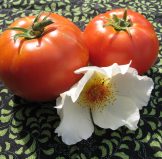 The bad news is that last week’s small delivery of tomato starts froze when the wind blew open the back door of our greenhouse in the middle of the night.
The bad news is that last week’s small delivery of tomato starts froze when the wind blew open the back door of our greenhouse in the middle of the night.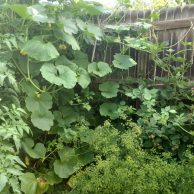 What a glorious spring! Having been blessed with generous snow and rain, the land is bursting with energy, greener than green, and flowering in kaleidoscopic exuberance! Migratory birds have been arriving or passing though our region this month, offering sightings of avian treasures like Lazuli Buntings and Western Tanagers, not to mention the hummingbirds. We do live in a wondrous world!
What a glorious spring! Having been blessed with generous snow and rain, the land is bursting with energy, greener than green, and flowering in kaleidoscopic exuberance! Migratory birds have been arriving or passing though our region this month, offering sightings of avian treasures like Lazuli Buntings and Western Tanagers, not to mention the hummingbirds. We do live in a wondrous world!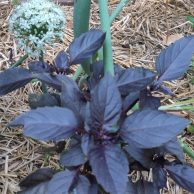 Basil is one of the great culinary pleasures of summer, and it’s definitely NOT TOO LATE to plant Basil and enjoy a good crop! Basil plants are beautiful, grow equally well in the ground or in pots, thrive in hot weather, provide a continuous, bounteous crop, and Basil’s many different flavors are essential to a variety of distinctive cuisines. It can be used fresh, dried, or frozen in oil or as pesto. Though basil leaves lose most of the aromatic oils when dried, we have still found that basil dried from your garden is so much more flavorful than commercial dried basil.
Basil is one of the great culinary pleasures of summer, and it’s definitely NOT TOO LATE to plant Basil and enjoy a good crop! Basil plants are beautiful, grow equally well in the ground or in pots, thrive in hot weather, provide a continuous, bounteous crop, and Basil’s many different flavors are essential to a variety of distinctive cuisines. It can be used fresh, dried, or frozen in oil or as pesto. Though basil leaves lose most of the aromatic oils when dried, we have still found that basil dried from your garden is so much more flavorful than commercial dried basil.
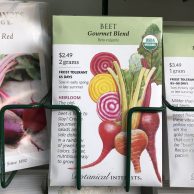
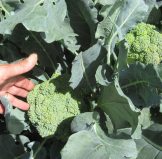 COOL SEASON VEGGIES
COOL SEASON VEGGIES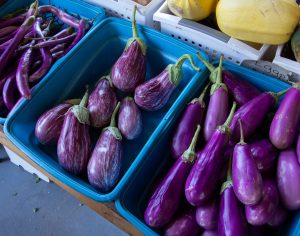 EGGPLANTS
EGGPLANTS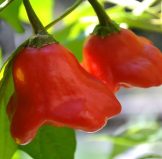
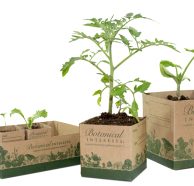 Even though we are about to receive our biggest snowstorm of this winter thus far, you can still make great progress on your garden by starting seeds indoors or even outside if your garden is prepared and you’re quick and can sow them tomorrow morning! You can also plant our hardy perennials, vines, shrubs and trees that have overwintered outdoors ahead of the storm. And our
Even though we are about to receive our biggest snowstorm of this winter thus far, you can still make great progress on your garden by starting seeds indoors or even outside if your garden is prepared and you’re quick and can sow them tomorrow morning! You can also plant our hardy perennials, vines, shrubs and trees that have overwintered outdoors ahead of the storm. And our 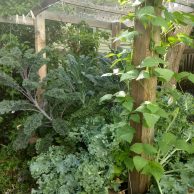
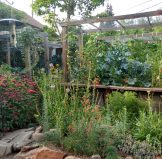 How to maximize your output
How to maximize your output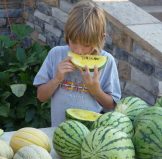 Do you love the sweet fruits and vegetables of late summer as much as we do? Well then, PLANT THEM NOW! We’ve got the heat now, which they thrive on. To develop those natural sugars, these crops take more time to mature than many other veggies, mostly between 70 and 100 days from seeding. We’ve saved you some time by growing starts, LOTS of them, and most of the varieties we’ve chosen will mature relatively early.
Do you love the sweet fruits and vegetables of late summer as much as we do? Well then, PLANT THEM NOW! We’ve got the heat now, which they thrive on. To develop those natural sugars, these crops take more time to mature than many other veggies, mostly between 70 and 100 days from seeding. We’ve saved you some time by growing starts, LOTS of them, and most of the varieties we’ve chosen will mature relatively early.
 This year’s Taste of Tomato was a blast! We love the new location at Growing Gardens’ Barn, with its’ beautiful view of the Flatirons, easy access, and wonderful staff. The tasting featured 44 different varieties of tomatoes, with Aunt Ruby’s German Green winning the greatest number of votes. Participants brought in some wonderful new varieties this year, including Brad’s Atomic Grape, Thornburn’s Terracotta, and Indigo Cherry. Look for the most popular varieties from this year and previous years when you come to buy your organic tomato starts next spring at Harlequin’s Gardens. Every year we grow 80+ great varieties for all kinds of uses and growing conditions!
This year’s Taste of Tomato was a blast! We love the new location at Growing Gardens’ Barn, with its’ beautiful view of the Flatirons, easy access, and wonderful staff. The tasting featured 44 different varieties of tomatoes, with Aunt Ruby’s German Green winning the greatest number of votes. Participants brought in some wonderful new varieties this year, including Brad’s Atomic Grape, Thornburn’s Terracotta, and Indigo Cherry. Look for the most popular varieties from this year and previous years when you come to buy your organic tomato starts next spring at Harlequin’s Gardens. Every year we grow 80+ great varieties for all kinds of uses and growing conditions!